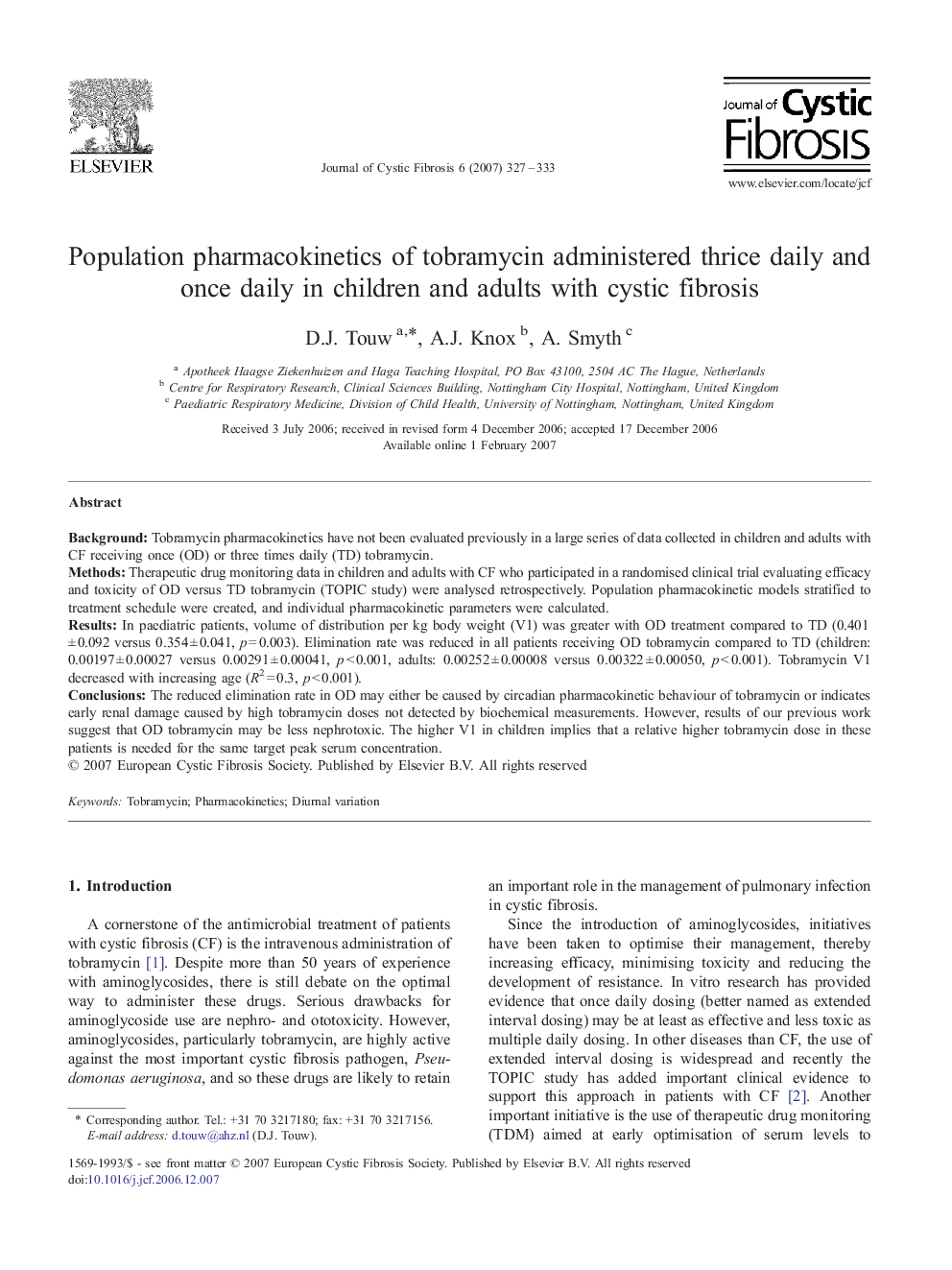| Article ID | Journal | Published Year | Pages | File Type |
|---|---|---|---|---|
| 4209310 | Journal of Cystic Fibrosis | 2007 | 7 Pages |
BackgroundTobramycin pharmacokinetics have not been evaluated previously in a large series of data collected in children and adults with CF receiving once (OD) or three times daily (TD) tobramycin.MethodsTherapeutic drug monitoring data in children and adults with CF who participated in a randomised clinical trial evaluating efficacy and toxicity of OD versus TD tobramycin (TOPIC study) were analysed retrospectively. Population pharmacokinetic models stratified to treatment schedule were created, and individual pharmacokinetic parameters were calculated.ResultsIn paediatric patients, volume of distribution per kg body weight (V1) was greater with OD treatment compared to TD (0.401 ± 0.092 versus 0.354 ± 0.041, p = 0.003). Elimination rate was reduced in all patients receiving OD tobramycin compared to TD (children: 0.00197 ± 0.00027 versus 0.00291 ± 0.00041, p < 0.001, adults: 0.00252 ± 0.00008 versus 0.00322 ± 0.00050, p < 0.001). Tobramycin V1 decreased with increasing age (R2 = 0.3, p < 0.001).ConclusionsThe reduced elimination rate in OD may either be caused by circadian pharmacokinetic behaviour of tobramycin or indicates early renal damage caused by high tobramycin doses not detected by biochemical measurements. However, results of our previous work suggest that OD tobramycin may be less nephrotoxic. The higher V1 in children implies that a relative higher tobramycin dose in these patients is needed for the same target peak serum concentration.
